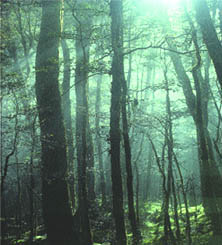Order out of chaos
 the island nation had had enough of it. In 1987, New Zealand finally buried its forest service, one of its most enduring symbols of bureaucratic bungling; an unlikely alliance of environmentalists, economists and reformist politicians played the role of executioners. Out of the ashes emerged the department of conservation ( d o c ), charged solely with protecting native forests. Of the 5.2 million hectares (ha) it now safeguards, not one can be laid bare any longer for production purposes; there are, however, exceptions for cultural purposes (making Maori canoes, for instance).
the island nation had had enough of it. In 1987, New Zealand finally buried its forest service, one of its most enduring symbols of bureaucratic bungling; an unlikely alliance of environmentalists, economists and reformist politicians played the role of executioners. Out of the ashes emerged the department of conservation ( d o c ), charged solely with protecting native forests. Of the 5.2 million hectares (ha) it now safeguards, not one can be laid bare any longer for production purposes; there are, however, exceptions for cultural purposes (making Maori canoes, for instance).
The revolutionary concept that publicly-owned native forests could be managed by a department that would never cut down a tree was too radical for some to contemplate. For decades, environmentalists had battled the 65-year-old forest service over its policy of destroying native forests and replacing them with the exotic radiata pine trees, native to California. By the early '80s, economists and politicians too had become disillusioned with the financial performance of government departments which undertook 20 per cent of the country's investment but generated only 12 per cent of the national income. The forest service was no exception; in its last years, it had been running at a loss. In retrospect, the decision to dismantle it is seen as the right one, except by those foresters adversely affected by the changes or those who continue to believe in the service's philosophy.
That philosophy
Related Content
- Order of the National Green Tribunal regarding pollution at Rohtang Pass, Himachal Pradesh, 06/07/2015
- Central Motor Vehicles (Sixteenth Amendment) Rules, 2014 gives the way to e-rickshaws
- HC order has brought chaos in the path of legal mining: Goa Foundation
- Toll is back on Gurgaon e-way, so is mega jam
- Inter-departmental chaos still on as GSPCB and Directorate of Mines pass the buck on implementation of suspension orders to erring mines
- Understanding and predicting the Indian summer monsoon
